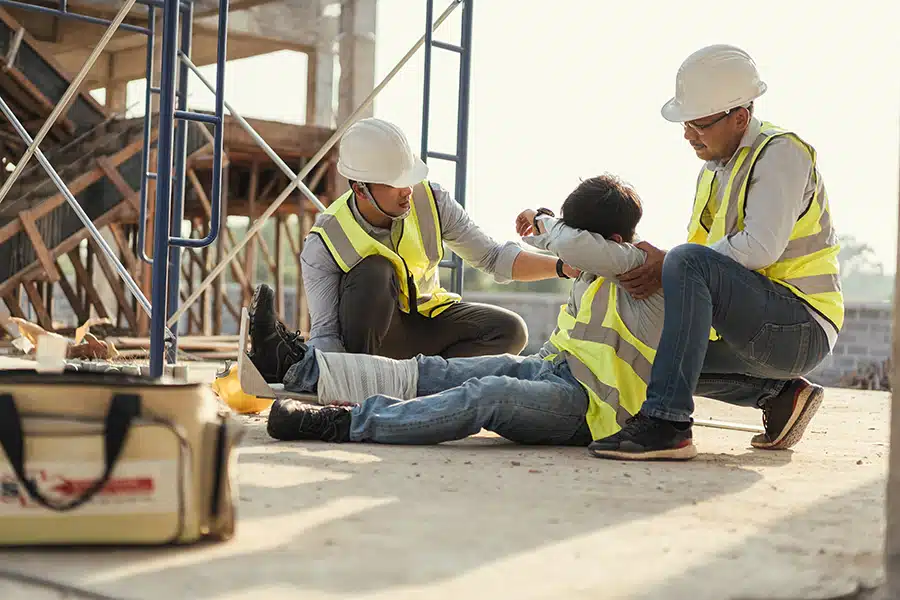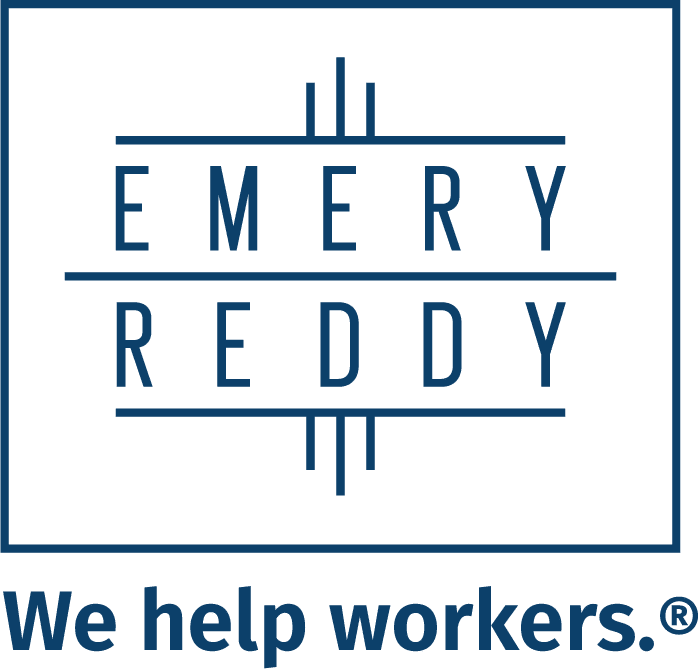Construction work is inherently hazardous, and accidents can occur despite stringent safety measures. Understanding the unique challenges and regulations surrounding construction site safety in Washington state is crucial for workers, employers, and anyone involved in the construction industry. Work-related injuries and industrial diseases are common occurrences in the construction industry, with injuries occurring at a higher-than-average rate for construction workers due various factors as stated by the Washington State Department of Labor and Industries (L&I):
What Is Considered a Construction Work Injury?
According to the Bureau of Labor Statistics, nonfatal construction work injuries and industrial diseases that were caused by trips, slips, or falls alone had a rate of 31.4 per 10,000 full-time workers in 2020, while the average rate for private companies across all industries was 21.7 per 10,000.
Common Causes of a Construction Work Injury
- Ignoring safety regulations: Employers should establish and observe a safety policy from foundation to finish. Oftentimes employers rush to complete a job, ignoring or relaxing safety regulations in the process. While this might speed up construction, it places workers at increased risk for injury.
- Auto accidents: Auto accidents are the leading cause of death for American workers on the clock. These accidents do not merely apply to cars and trucks, but also to tractors, cranes, forklifts, and other vehicles used in the construction industry.
- Inadequate training: Employers should properly train all members of a construction crew on safety operations and procedures for a given building site. Emergency procedures should also be put in place, and all workers should receive proper training to fully understand how to do their jobs safely.
- Construction falls: Safety harnesses do not always prevent injuries during a serious fall, especially if they are used improperly. The leading cause of serious injury and death in the construction industry is caused by falling to a lower level, which is often linked to an improper safety constraint. Construction site falls can cause broken bones, back injuries, spinal cord injuries, and even wrongful death. In many cases, a safety rail or properly used safety harness could prevent these unnecessary falls.
- Defective equipment: Workers often suffer from a serious or catastrophic injury after they are pinned, trapped, or crushed beneath machinery; in many tragic cases, these incidents can lead to amputation or death. Machinery such as forklifts, wood chippers, and augers are frequent culprits in amputation. Oftentimes a defective hydraulic lift causes hundreds of pounds of equipment to fall, resulting in life-threatening injuries to construction workers.
Types of Construction Work Injuries

The most common types of reported construction work injuries according to the Occupational Safety and Health Administration (OSHA) include:
- Falls,
- Individuals being struck by objects,
- Faulty machinery or vehicle accidents,
- Individuals getting pinned or stuck between objects, and
- Electrocutions.
The effects of construction work injuries can also be mental or emotional. Being involved with or witnessing a construction work injury can be traumatic. Psychological damage is still damage and can still be treated in a Washington state L&I claim. If a construction work accident has left you with depression, anxiety, PTSD, or thoughts of suicide, you should seek medical treatment and L&I benefits. If you are experiencing thoughts of suicide, please call or text the Suicide & Crisis Lifeline at 988 or call emergency services at 911 immediately.
Product Liability Lawsuits for Construction Work Injuries
Product manufacturers are responsible for the quality and reliability of the products they produce. If the equipment you are using on a construction site fails and causes an injury while you are using it under the recommended conditions and following safety protocols, this is a critical defect, and the manufacturer could be liable for the injury. Additionally, if equipment or materials expose you or your team to unnecessary levels of toxic chemicals that the manufacturer did not make known, the manufacturer could also be liable. In both of these cases, the manufacturer can be sued by an experienced construction accident lawyer as part of a third-party claim.
Your Construction Work Injury L&I Claim Is Worth More If You Have a Third-Party Claim
Construction work injury L&I claims and third-party claims often go together, and injured workers often need to file both. A construction work injury L&I claim will be filed with your doctor at your first medical visit regarding the injury. At a later date, if they suspect your case qualifies for a third-party claim, L&I will send you a Third Party Election Form. Either you or your construction accident lawyer will need to fill out this form and send it back within 60 days of receiving it.
Construction Work Injury L&I Claims and Third-Party Claims Affect Each Other
- Third-party claims combine your construction work injury L&I claim with your personal injury claim using the same facts.
- A third-party settlement will affect ongoing and future L&I benefits because the Department of Labor and Industries must be reimbursed from any recovery.
- L&I orders directly affect your third-party claim.
- A third-party claim can create a deficiency and ruin your L&I claim.
- A bad order or unfavorable Independent Medical Exam (IME) can hurt your third-party claim.
- A Washington state L&I claim can be limited or even denied by L&I or the self-insured employer (SIE) thereby severely affecting the third-party recovery.
Since L&I is generally a no-fault system and no one is being sued in the process of a Washington state L&I claim, there is no need to prove that any individual is at fault for the injury. In Washington state, any employee who is injured while on the job should file an L&I claim, whether the person who caused them to be hurt was themselves, a coworker, or their employer. An L&I claim is meant to handle the construction workers’ compensation coverage for your injuries, allowing L&I to pay for your medical expenses, regardless of who (if anyone) is technically at fault.
Following your injury, you and your doctor will file a Report of Accident with L&I to put the process in motion.
To clarify the types of injuries that would lead to an L&I claim, let’s look at some examples.
- Your coworker neglects to clean up their tools and hardware. Sometime later, you walk through the area and step on a nail, which punctures your boot and stabs you in the foot.
- Your employer is behind schedule and asks the team to rush their work. To beat the new deadline, your form starts to get sloppy as you lift a heavy object, and you throw out your back as a result.
- A coworker on the level above you loses their grip on a tool, which falls and strikes you on the head, causing a concussion.
Each of these situations occurred while on the job. While each was the result of negligence, none of them were intentional, and all people involved were employed by the same organization. Because of those facts, all three of these examples would result in a Washington state L&I claim.
A third-party claim is one in which someone other than your employer or co-worker is responsible for your injury, combining your Washington state L&I claim with a personal injury claim using the same facts. If you have been injured on the job due to someone else’s actions or negligence, you may be entitled to additional compensation through a third-party claim.
Unlike workers’ compensation payments, there is no limit to the amount of compensation an injured worker may seek in third-party damages. Third-party claims are private matters and are typically litigated directly with the Washington State Superior Court.
- Contractor: A contractor is responsible for ensuring a safe workplace for their employees and should run their site in compliance with OSHA and WISHA regulations. Contractors have vicarious liability for any negligence of individuals or organizations they control or to which they delegate.
- Subcontractor: Like a contractor, subcontractors are required to keep their workplace safe in all matters that relate to the scope and area of their work. Subcontractors are responsible for any hazards occurring in an area of the site that they control.
- Product manufacturer: Manufacturers must verify that the products they create are adequately tested and inspected, ensuring that normal, safe use of their products does not create unnecessary danger or toxic chemicals resulting in what could be a potential product liability claim.
- Rental companies: Much like manufacturers, rental companies are responsible for the maintenance and safe storage of the equipment they rent out. If rental equipment fails under normal use and causes an injury, the rental company could be at fault.
- Landowners: The owner of the worksite is responsible for keeping their property safe and either fixing hazardous conditions or adequately notifying those who work there.
- Other individuals or businesses: Many other individuals or businesses that work at the construction site have their own duties and responsibilities. Negligence of those responsibilities can lead to injuries.
As stated above, third-party claims require you to prove fault. To do that, you and your construction accident lawyer will have to gather evidence. The nature of workplace injuries in general — and construction injuries in particular — means that the site where your injury occurred can change quickly and often.
As soon as possible, take adequate records of what happened, take pictures of the circumstances that led to your injury, talk to witnesses, and request WISHA inspectors at 1.800.4BESAFE to visit the worksite. An experienced construction accident lawyer can also help you to gather the most crucial information and use it to build the best possible case.
In an L&I construction work injury claim, you cannot sue your employer for an injury you received while on the job. L&I claims are no-fault, so even if your employer was the cause of the accident, there is no lawsuit against them. The L&I system is meant to cover workers’ compensation scenarios in Washington state and waives your right to sue the employer for a worksite injury.
However, there are certain exceptions where you can sue your employer or coworker.
- Intentional injury: If there is evidence that your employer or coworker knew that their actions or inactions would result in your injury and willfully continued anyway, then you may have a case for intentional injury. This can be difficult to prove.
- Claims that are not mainly about the injury: Cases of wrongful termination or other violations of Employment and Labor Law (discrimination, harassment, etc.) do not fall under L&I’s purview.
- If the injured employee was a temporary employee: Since temporary employees are not technically part of the organization, you could pursue a third-party claim if negligence on the job site caused their injury.
How Do I Know If I Have a Strong Washington State L&I Claim?
If you have a Washington State L&I claim or wonder if you should contact an experienced Seattle L&I attorney, ask yourself the following:
- Have I been denied the medical benefits to which I am legally entitled?
- Has L&I asked me to undergo an Independent Medical Exam (IME)?
- Do I have questions about the Washington state L&I claim process?
If any of the above apply to you, Emery | Reddy may be able to help.
Navigating a Washington state L&I claim can be difficult and very time-consuming, especially when you’re ill or injured. You want to focus on healing and make sure your bills are paid, but if you don’t file things properly or on time, your health, home, and job could be in jeopardy. Many individuals miss out on much-needed L&I benefits because they don’t understand what to do or how to get the most compensation for their injuries. If you are experiencing any challenges in your case, a Seattle workers’ compensation and L&I attorney can assist you. By contacting Emery | Reddy as soon as possible after you’ve been injured, we can help you avoid the common pitfalls of filing and navigating an L&I claim. Our Seattle L&I Attorneys are here for you every step of the way.
How to File a Construction Work Injury L&I Claim in Washington State
In order to receive benefits from L&I there are two very important things that you must do right away, even before a claim is filed:
- Get medical help.
- Tell your employer.
If you are injured at work, you have three options to file a Washington state L&I claim:
- File by phone at 877.561.3453.
- File online through the L&I website’s File Fast tool.
- File at your doctor’s office.
Note that if you work with a self-insured employer (SIE), you must file your claim with them. Contact your employer’s human resources department for help.
To file an L&I claim in Washington state, you must provide the following:
- The location where the injury occurred
- Contact information for any witnesses to the injury
- Employer information
- Wage information
- If you have already seen a doctor:
- Your doctor’s first and last name
- The hospital or clinic where you received treatment
If you are eligible for time-loss benefits and no further information is needed, L&I or your self-insured employer will send the first benefit check within 7 days of receiving the report. If your doctor is one of the many healthcare providers that do not handle workers’ compensation claim cases, you can find an L&I-approved doctor on the L&I website. If your L&I claim is approved, the State will cover the initial visit even if it wasn’t with one of their approved doctors.
L&I or your self-insured employer must receive your Report of Accident within 1 year of your injury date to file a claim. Industrial disease claims must be received within two years of the date that your doctor notified you in writing that your injury is work-related.
How Do I File a Third-Party Claim?
The third-party statute of limitations (SOL) in Washington state is 3 years in most cases. You must settle your claim or file a lawsuit before those 3 years run out.
If you file within the SOL, there are two main steps that you must follow to file your third-party claim.
Step 1: Consult with a Construction Accident Lawyer before Talking to Insurance Companies
Insurance companies are experts at minimizing their liability costs, sometimes at the expense of the victim. Let a construction accident lawyer advise you against making a statement that the insurance company can later use against you.
Step 2: Complete an L&I Third-Party Election Form
The Department of Labor and Industries will send you a Third Party Election Form. If you do not indicate your preferred course of action on the L&I form, your case could be automatically assigned to L&I, which would mean the loss of your right to pursue third-party compensation with your own L&I third-party attorney. Failure to return the L&I Third Party Election Form could also cost you your rights.
The L&I Third Party Election Form has three options. Be sure to talk to your construction accident lawyer to determine the best course of action for you:
Option A: You DO Want to Take Legal Action against the Third-Party Yourself, with Your Own Seattle Workers’ Compensation and L&I Attorney
Selecting Option A on the Third Party Election Form indicates your desire to work with a construction accident lawyer to seek damages for your injury. Your attorney will help you complete the form, notify L&I when the lawsuit has been filed, and handle case details and updates on your behalf.
If you receive a financial settlement or award through action with your L&I third-party attorney:
- You or your construction accident lawyer must report the amount of any award to L&I. After receiving a third-party settlement, you are responsible for repaying any L&I benefits you may have received. However, your attorney can assist you in negotiating the refund amount for which you are responsible.
- Once reaching a third-party settlement, funds are distributed according to Washington state mandate between you, your Seattle workers’ compensation and L&I attorney, and reimbursement to L&I.
Option B: You DO NOT Want to Take Legal Action Yourself, but Will Give This Right to L&I
Option B indicates that you do not wish to take legal action yourself, but instead want L&I to take legal action against the third-party on your behalf. However, they may decline to do so. We highly recommend consulting an experienced construction accident lawyer bound by law to act in your best interests rather than entrusting L&I with your case.
Washington state law allocates funds differently for settlements and awards reached through L&I. If you receive any portion of the recovered funds, there is a significant chance that you will receive less compensation than you would with your own L&I attorney.
Option C: No Third-Party is Responsible
Choosing Option C means you do not feel that your work injury was caused by a third party. We advise that all injured workers consult third-party attorneys before making any judgments regarding the nature of their accident. Third-party liability is difficult to determine without comprehensive legal training. An experienced construction accident lawyer will fight aggressively for your best interests to earn you the maximum possible settlement.
Emery | Reddy Can Help You with Your Construction Work Injury L&I Claim
Emery | Reddy is the only law firm in Washington state that is equipped to provide comprehensive representation on your case from every angle. Our Construction Accident Lawyers thoroughly assess every case to determine if our clients have additional claims, and at times this can extend far beyond the underlying workers’ compensation claim.
If you have been injured in the workplace, call Emery | Reddy today for a Free Case Review with an experienced Intake Specialist to learn more about how we may be able help. No fee unless we recover for you.
Are you Injured?
Contact Us Today
Contact Us for a FREE Case Review.
No Fee Unless We Recover for You.
Want More Information?
If you sustain a serious or life-changing injury and are no longer able to work, you could be entitled to a Washington state L&I disability pension.
The Labor and Industries claim process is anything but straightforward. Find out the answers to your L&I — workers’ comp questions today.
Laws regarding personal injury and insurance are extremely complex. Find out the answers to your personal injury questions today.
WE FIGHT FOR YOU
Meet the Team
If you’ve been injured on the job or are dealing with a difficult Washington state L&I claim, the experienced L&I Attorneys at Emery | Reddy, PLLC are here to help. We represent Washington state workers in Labor and Industries (L&I) claims and Employment Law disputes.
With over 80 years of combined experience, our L&I Lawyers understand how the Washington State Department of Labor & Industries (L&I) — and large employers — operate. We use that knowledge to help injured workers recover time-loss, medical benefits, vocational rehabilitation, PPD awards, and L&I pensions. Our legal team also holds employers accountable for wrongful termination, retaliation, and wage violations.
Don’t navigate your L&I claim alone. Contact the trusted L&I Attorneys at Emery | Reddy for a Free Case Review with an experienced Intake Specialist to learn more about how Emery | Reddy may be able to help. No fee unless we recover for you.
Serving Seattle, Tacoma, Spokane, Everett, and workers across Washington state.
“I am so thankful I reached out for their help and would say to anyone that finds themselves in a similar situation to inquire with them for representation! Worker’s Comp situations are stressful and hard enough as it is — don’t walk it alone!”
— J.J.
Receive a
FREE Case Review








